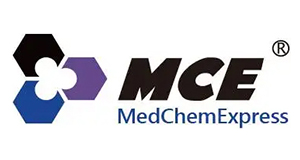Capsaicin, CAS 404-86-4
Capsaicin, CAS 404-86-4
Artikelnummer
MEXHY-10448-500
Verpackungseinheit
500 mg
Hersteller
MedChemExpress
Verfügbarkeit:
wird geladen...
Preis wird geladen...
Product Description: Capsaicin ((E)-Capsaicin), an active component of chili peppers, is a TRPV1 agonist. Capsaicin has pain-relieving, antioxidant, anti-inflammatory, anti-cancer and certain neurotoxic effects[1][2].
Applications: Cancer-programmed cell death
Formula: C18H27NO3
References: [1]McNamara FN, et al. Effects of piperine, the pungent component of black pepper, at the human vanilloid receptor (TRPV1). Br J Pharmacol. 2005 Mar;144(6):781-90./[2]Shin YH, et al. The Effect of Capsaicin on Salivary Gland Dysfunction. Molecules. 2016 Jun 25;21(7)./[3]Anandakumar P, et al. Capsaicin provokes apoptosis and restricts benzo(a)pyrene induced lung tumorigenesis in Swiss albino mice. Int Immunopharmacol. 2013 Jun 6;17(2):254-259./[4]Nah JJ, et al. Effect of ginsenosides, active components of ginseng, on capsaicin-induced pain-related behavior. Neuropharmacology. 2000 Aug 23;39(11):2180-4./[5]Joshi SK, et al Comparison of antinociceptive actions of standard analgesics in attenuating capsaicin and nerve-injury-induced mechanical hypersensitivity. Neuroscience. 2006 Dec 1;143(2):587-96./[6]Pelissier T, et al. The orofacial capsaicin test in rats: effects of different capsaicin concentrations and morphine. Pain. 2002 Mar;96(1-2):81-7./[7]Matsuda H, et al. Roles of capsaicin-sensitive sensory nerves, endogenous nitric oxide, sulfhydryls, and prostaglandins in gastroprotection by momordin Ic, an oleanolic acid oligoglycoside, on ethanol-induced gastric mucosal lesions in rats. Life Sci. 1999;65(2):PL27-32./[8]Demirbilek S, et al. Small-dose capsaicin reduces systemic inflammatory responses in septic rats. Anesth Analg. 2004 Nov;99(5):1501-1507./[9]Friedman JR, et al. Anticancer Activity of Natural and Synthetic Capsaicin Analogs. J Pharmacol Exp Ther. 2018 Mar;364(3):462-473./[10]Glinsukon T, et al. Acute toxicity of capsaicin in several animal species[J]. Toxicon, 1980, 18(2): 215-220./[11]Kawada T, Iwai K. In vivo and in vitro metabolism of dihydrocapsaicin, a pungent principle of hot pepper [Capsicum annuum], in rats[J]. Agricultural and Biological Chemistry (Japan), 1985, 49(2)./[12]Saito A, Yamamoto M. Acute oral toxicity of capsaicin in mice and rats[J]. The Journal of toxicological sciences, 1996, 21(3): 195-200.
CAS Number: 404-86-4
Molecular Weight: 305.41
Compound Purity: 99.88
Research Area: Cancer; Inflammation/Immunology; Neurological Disease
Solubility: DMSO : 100 mg/mL (ultrasonic)/Ethanol : 100 mg/mL (ultrasonic)
Target: Apoptosis;Autophagy;Endogenous Metabolite;TRP Channel
Applications: Cancer-programmed cell death
Formula: C18H27NO3
References: [1]McNamara FN, et al. Effects of piperine, the pungent component of black pepper, at the human vanilloid receptor (TRPV1). Br J Pharmacol. 2005 Mar;144(6):781-90./[2]Shin YH, et al. The Effect of Capsaicin on Salivary Gland Dysfunction. Molecules. 2016 Jun 25;21(7)./[3]Anandakumar P, et al. Capsaicin provokes apoptosis and restricts benzo(a)pyrene induced lung tumorigenesis in Swiss albino mice. Int Immunopharmacol. 2013 Jun 6;17(2):254-259./[4]Nah JJ, et al. Effect of ginsenosides, active components of ginseng, on capsaicin-induced pain-related behavior. Neuropharmacology. 2000 Aug 23;39(11):2180-4./[5]Joshi SK, et al Comparison of antinociceptive actions of standard analgesics in attenuating capsaicin and nerve-injury-induced mechanical hypersensitivity. Neuroscience. 2006 Dec 1;143(2):587-96./[6]Pelissier T, et al. The orofacial capsaicin test in rats: effects of different capsaicin concentrations and morphine. Pain. 2002 Mar;96(1-2):81-7./[7]Matsuda H, et al. Roles of capsaicin-sensitive sensory nerves, endogenous nitric oxide, sulfhydryls, and prostaglandins in gastroprotection by momordin Ic, an oleanolic acid oligoglycoside, on ethanol-induced gastric mucosal lesions in rats. Life Sci. 1999;65(2):PL27-32./[8]Demirbilek S, et al. Small-dose capsaicin reduces systemic inflammatory responses in septic rats. Anesth Analg. 2004 Nov;99(5):1501-1507./[9]Friedman JR, et al. Anticancer Activity of Natural and Synthetic Capsaicin Analogs. J Pharmacol Exp Ther. 2018 Mar;364(3):462-473./[10]Glinsukon T, et al. Acute toxicity of capsaicin in several animal species[J]. Toxicon, 1980, 18(2): 215-220./[11]Kawada T, Iwai K. In vivo and in vitro metabolism of dihydrocapsaicin, a pungent principle of hot pepper [Capsicum annuum], in rats[J]. Agricultural and Biological Chemistry (Japan), 1985, 49(2)./[12]Saito A, Yamamoto M. Acute oral toxicity of capsaicin in mice and rats[J]. The Journal of toxicological sciences, 1996, 21(3): 195-200.
CAS Number: 404-86-4
Molecular Weight: 305.41
Compound Purity: 99.88
Research Area: Cancer; Inflammation/Immunology; Neurological Disease
Solubility: DMSO : 100 mg/mL (ultrasonic)/Ethanol : 100 mg/mL (ultrasonic)
Target: Apoptosis;Autophagy;Endogenous Metabolite;TRP Channel
| Artikelnummer | MEXHY-10448-500 |
|---|---|
| Hersteller | MedChemExpress |
| Hersteller Artikelnummer | HY-10448-500 |
| Verpackungseinheit | 500 mg |
| Mengeneinheit | STK |
| Produktinformation (PDF) |
|
| MSDS (PDF) |
|

 English
English










